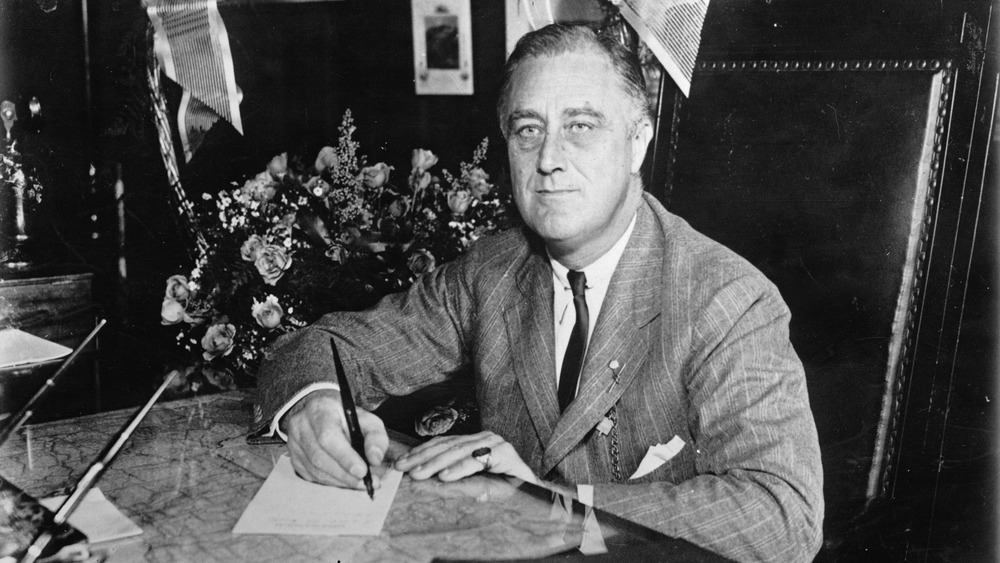How Social Security Would Not Have Existed Without The Great Depression
In October of 1929, the financial excess and reckless overconfidence of the 1920s came to a disastrous end when the stock market finally crashed, plunging the entire world into an economic turmoil that would become known as The Great Depression. In the early 1930s, millions of Americans were out of work, and many were struggling to support their families. Skyrocketing unemployment reached as high as 90 percent in some parts of the country, according to History. Up to two million men saw no alternative but to start drifting around the country, searching desperately for work anywhere they could get it, per the Social Security Administration.
The elderly were among those hit hardest by the Depression. Not only were they the first to be let go when employers began cutting costs, there were also simply more of them than there had been in previous centuries. In the 20th century, life expectancy had increased, and people were living longer than ever. By 1935, over 7.8 million Americans were over age 65, according to Ohio History Central.
Progressives began clamoring for some kind of social safety net to help the nation's most vulnerable populations. President Franklin D. Roosevelt launched the New Deal, which was a combination of regulations, programs, and public works projects aimed at stabilizing the economy and getting Americans back to work.
FDR established the Social Security Act in 1935
To address the growing unemployment problem, President Roosevelt also established the Committee on Economic Security in 1934. They proposed implementing three programs: unemployment insurance, the Aid to Families with Dependent Children program, and old-age insurance, which was the precursor to today's Social Security program, according to the Social Security Office of Policy. One year later, Roosevelt signed these programs into law with the Social Security Act of 1935.
While the idea for some type of social insurance program had been around since the 1880s in Germany, it had not yet taken off in America. Although increased industrialization had illuminated the growing need for some kind of protection against the volatility of wage income, it took the greatest economic downturn in American history to spark any change.
Secretary of Labor Frances Perkins, who was the head of the Committee on Economic Security and one of the driving forces behind the creation of the Social Security program, admitted the Depression was the catalyst that enabled the Social Security Act to finally be passed. "No matter how much fine reasoning there was about the old-age insurance system and the unemployment insurance prospects... the real roots of the Social Security Act were in the Great Depression of 1929. Nothing else would have bumped the American people into a social security system except something so shocking, so terrifying, as that depression," she said, via the Social Security Office of Policy.

